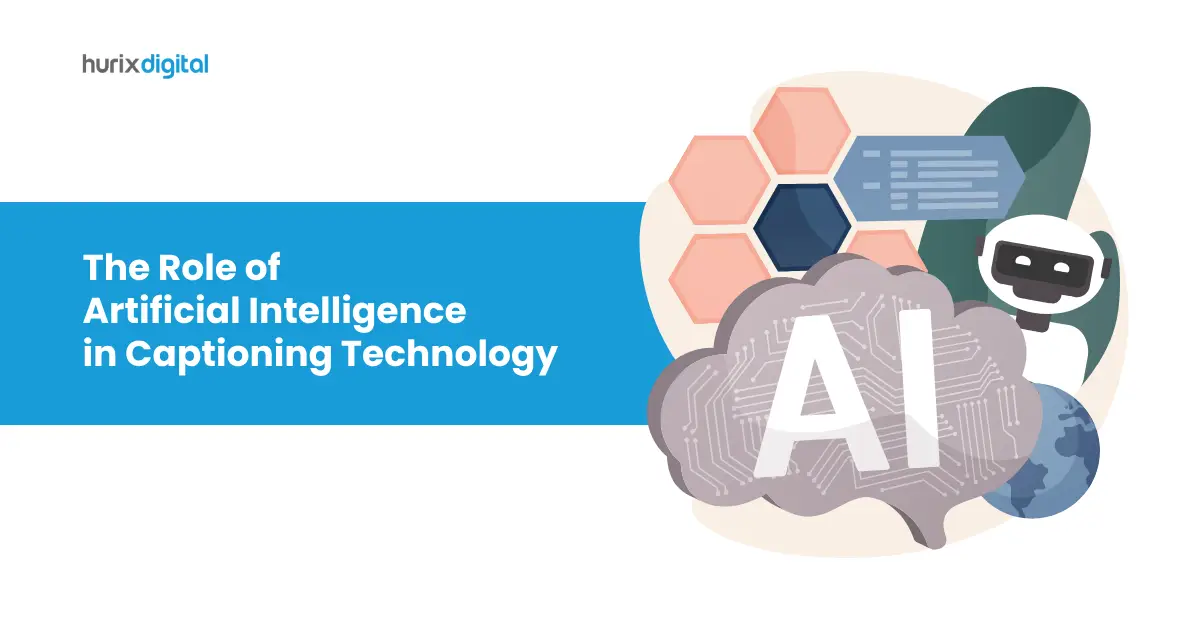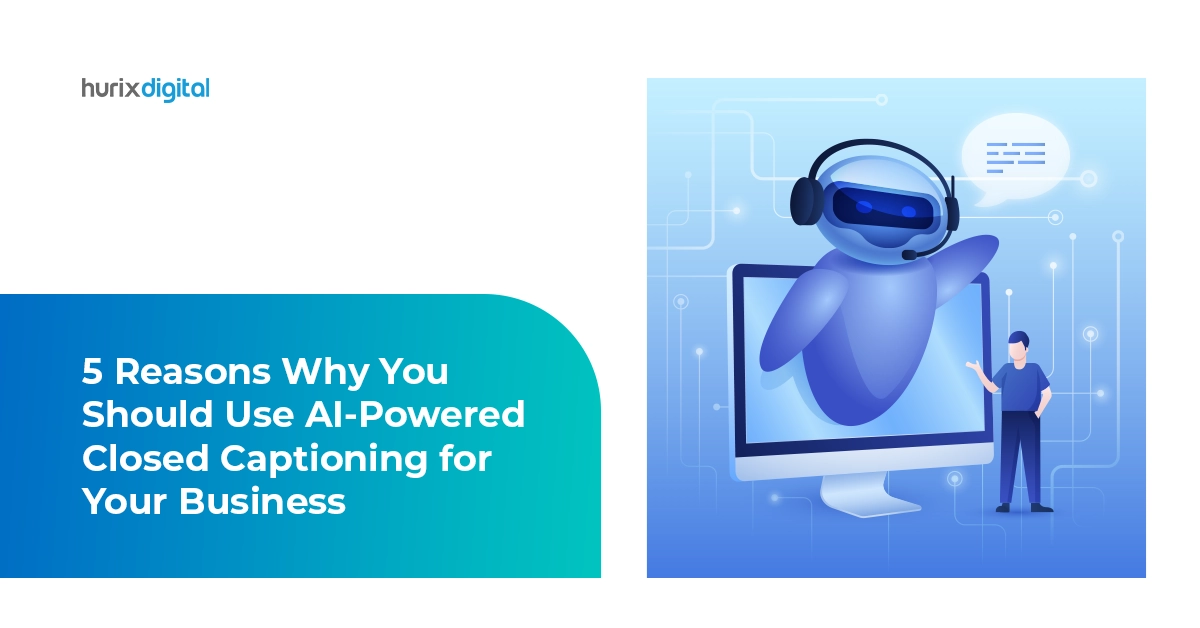Summary
This guide has covered the importance of Captioning and how it has been improved by the use of AI. We've also touched upon the benefits of using AI in captioning technology and how it can help break language barriers.
Video content is all set to take over the world, but don’t just take our word for it. Statistics showed that by 2022, 82% of all internet traffic was made up of video content.
Videos are often a lot more engaging than written content and have also proven to be better at enabling viewers to retain information. In fact, viewers claim that they retain 95% of the information given to them in the form of videos.
It’s evident, then, that video marketing is set to be one of the biggest trends as we transition into 2024. While businesses across industries are set to invest more in video marketing, the increase in scale must also be met with a focus on making video more accessible to users. One of the key ways this can and has been done for years is by using closed captions.
Closed captions refer to the textual aspect of videos that are used to aid those with hearing impairments to understand what the content is about. However, adding closed captions can be a challenge, especially when you produce videos in large volumes.
This is where AI-powered closed captioning can play a crucial role, and already is. In this guide, we take you through the role of AI in captioning technology.
Table of Contents:
Why is Captioning Important?
Captioning plays a crucial role in the video for various reasons. While we’ve already touched upon its benefits in terms of accessibility in the introduction, there are several other reasons to ensure your videos have captions included.
- Captioning makes engaging with your content easier – Statistics show that 92% of smartphone users in the US consume video without sound, making it crucial that your video has captions if you want users to continue engaging with your content.
- It can help boost your audiences’ attention spans – This is evidenced by the fact that videos with captions have longer viewing times. Additionally, they can also help viewers comprehend your videos easily, especially when the language used may be of a different dialect than that of the viewer.
- It can help you maximize your SEO efforts – Search engines can’t index videos. Still, they do index text, and adding captions to your videos makes it easier for them to identify, index, and then provide your videos to a user for its targeted search query. This can easily be achieved using an AI subtitle generator.
- It helps make your videos accessible – AI-generated captions allow those with hearing impairments to continue engaging with your content despite the challenges presented by their disabilities.
Also Read: Seven Roles of Artificial Intelligence in Learning and Development
How Has AI Impacted Captioning Technology?
Artificial intelligence has had a tremendous impact on captioning technology. It’s evident at this point that the use of captions doesn’t just cater to those with hearing disabilities but also to those who simply don’t use sound while consuming content in the form of videos.
Those businesses that have leveraged the power of AI closed captioning have witnessed the impact it can have, and in this section, we take a look at the various ways in which AI has impacted closed captioning.
1. AI Offers Speed and Affordability in Live Captioning
Traditional closed captioning relied on human stenographers to transcribe speech before creating captions to go with them. However, closed captioning AI has disrupted the status quo in more ways than one. Automated speech-to-text technology is now capable of generating captions in real time with almost complete accuracy.
This has had an impact across a host of sectors, with education being a key beneficiary. The shift from traditional rote learning to online instruction has led to education becoming a lot more accessible. Physical barriers no longer stand in the way, and with AI-powered closed captioning, education has become a lot more equitable for those with disabilities.
This access hasn’t just benefited those with impairments but also those whose native language is different from the language of instruction. This is evidenced in a study that showed 66% of ESL students found captions extremely helpful in the learning process.
Major credit for such accessibility goes to regulations by the ADA and FCC, which mandate the use of captions to make video content fully accessible.
2. Real-time Accuracy Across a Wide Range of Mediums
Education is one of many sectors that have benefited from the advent of AI live captioning. Speech-to-text technology today has reached a point where it can offer real-time accuracy across a wide range of mediums, including webinars, videos, podcasts, and a lot more, and so at a fraction of the cost.
This level of accuracy has a host of benefits. For instance, it has helped those with hearing impairments reduce their dependence on others to help them understand key financial concepts or any other material on the subject. It has also helped these segments of the population access accurate information, which is critical when dealing with banks, finances, and investments.
3. Offers Immense SEO Benefits
Search engines are not equipped to hear content in the form of audio – they need to be told what content in other forms contains for them to index and recommend them. This is where closed caption, especially when seamlessly generated using the power of AI, can play a key role.
The presence of captions accompanying text in the form of audio and video makes it searchable, allowing your content to show up on search results and become easier to find and engage with.
4. Helps Break Language Barriers
AI tools like Equalsense, for instance, offer support across multiple languages, thereby ensuring that your content reaches more than just an English-speaking audience. In fact, statistics indicate that by 2020, the US had a total of 4.9 million English Learners enrolled in primary and secondary schools.
This number is limited to schools alone; think about how many English Learners you could engage if your business could generate accurate captions in real-time across a wide range of languages.
Multilingual support for AI-powered closed captioning thus allows you to reach a wider audience, thereby giving your business a global reach and ensuring greater accessibility.
Also Read: AI-Enabled Closed Captioning: A Game-Changer for Customer Engagement
In Conclusion
Artificial technology has been the driving force behind some of the biggest technological revolutions the world over. It has significantly helped enhance the provision of accessibility solutions across countless industries such as healthcare, education, finance, and a whole lot more, and this trend is only set to continue.
In terms of AI video captioning technology, for example, AI has enabled players across industries to ensure that their content across all platforms is substantiated with captions, thereby increasing access to every segment of their audiences.
If you’re looking to make your business more accessible, reach a wider audience, and ensure compliance with regulations, you must leverage the power of AI in captioning. Hurix Digital is among the many players in the market that have incorporated captioning AI in their products and services. Reach out to them to find out how they can help you meet your business’s goals better.







